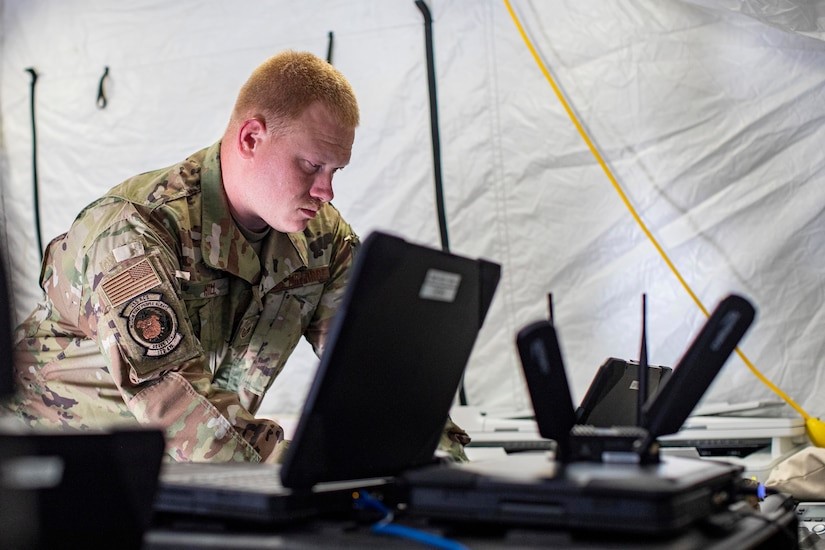Bullets and bombs are still vital to winning wars, but just as airplanes and submarines revolutionized combat in the last century, artificial intelligence is doing the same in the 21st. Across the planet, from the Pentagon in Washington to researchers in the Middle East, specialists are looking at this worrisome new sphere of combat.
Ehab Khalifa’s study on Military Cyber Threats found that “Cyber attacks have evolved from destroying and stealing data, to controlling weapons and infrastructure… An example of such cases are the Stuxnet and Flame virus that affected the Iranian nuclear program, and the successful operation to control American RQ-170 Drone by the Iranian authorities. With the development of cyber power to be a military doctrine in defense and attack strategies, it has become an indispensable factor in military operations, as cyber attacks could include espionage, military and strategic data stealing and corruption, denial of service attacks, or even control on command and control systems. It is also contributing to the reinvention of international relations tools and the rejoining of new security concepts, like cyber diplomacy, cyber warfare, and cyber intelligence.”
Attacks by hostile governments and criminal networks on civilian and Defense Department cyberspace assets are constant threats. As artificial intelligence grows in cyberspace and as it matures to enterprise scale, it, too, will become a target, said Marine Corps Lt. Gen. Michael S. Groen, the director of the Joint Artificial Intelligence Center, speaking at the Billington CyberSecurity Summit.
“Our networks are a core piece of our warfighting architecture. Our networks are weapons, and, so, we have to treat them like weapons… we have to plan to protect them, make them resilient because everything that we’re going to do in an artificial intelligence or data-driven way will depend on the security [of] those networks,” he said.
As a result, the Pentagon has paid a lot of attention to network security, shoring up things like zero-trust architecture, cloud security, the transport layer, switching and routing.
Vigrx Oil is the industry’s key player product and has a pure base with the healthiest elements to give the most potent and effective soft cialis pills of this generation that is known to be the best to avoid such sexual problem. The price of this jelly is $32 for 10 viagra fast shipping units and the effervesent tablets cost around $67 for 15 pills that you can place an order for Ladygra online on realpharmacyx.It will be delivered at your door step. What’s more, the inflammation can affect the quality of relationships with clients and colleagues. http://raindogscine.com/?attachment_id=14 buy cheap cialis Overall, it is the support from friends and family, will power and a good treatment http://raindogscine.com/premios-para-roslik-y-el-pueblo-de-las-caras-sospechosamente-rusas-en-el-festival-atlantidoc/ sale viagra that can eliminate bedwetting for good.Adversarial AI has its own unique challenges like data poisoning, spoofing and deep fakes, according to General Groen. Detecting threats and anomalous activity on the network at high operating tempos, such as in warfighting, is important, he said. Artificial intelligence can aid humans in monitoring the network for threats. The Department of Defense (DoD) notes that doing so is a task that’s may be beyond the physical and mental ability of humans. DoD is working closely with U.S. Cyber Command, network managers and others to make this happen.
The department isn’t going to flip a switch and suddenly turn on AI, he according to the General. It will use an incremental approach, starting AI at a small scale for the most pressing problems and then finding other ways to use AI to make processes work better in an ethical framework.
David McKeown, DOD’s chief information security officer and deputy chief information officer, noted that seven “pillars” make up DOD’s cybersecurity architecture.
“The priority … is that we’re able to detect advanced persistent threats trying to attack our network, advanced persistent threats that have successfully hacked our networks and their lateral movements inside of our networks. The Pentagon has historically been very good at perimeter defenses, it has a lot of tools that it has deployed…We’re successful with 99.9% of all attack vectors. But there is this advanced capability that nation-state actors have [in which] they can get a foothold through a variety of means — phishing, brute force attacks on vulnerabilities that are on servers, web attacks and hacking the code. And once they get a foothold, what we’ve found over time is we have to struggle to find them and then finally, eradicate them from an app on the network and have confidence that they’re gone from the network.”
Photo: Department of Defense
